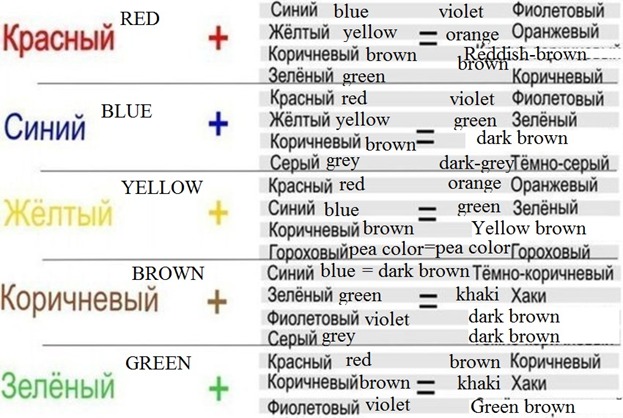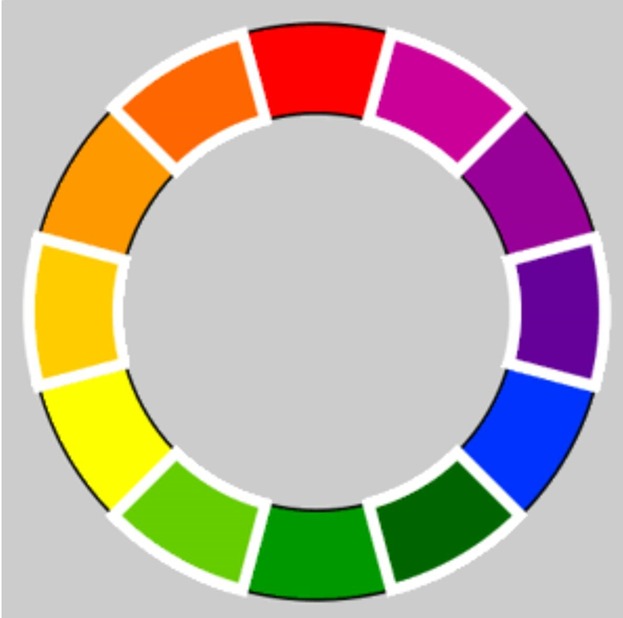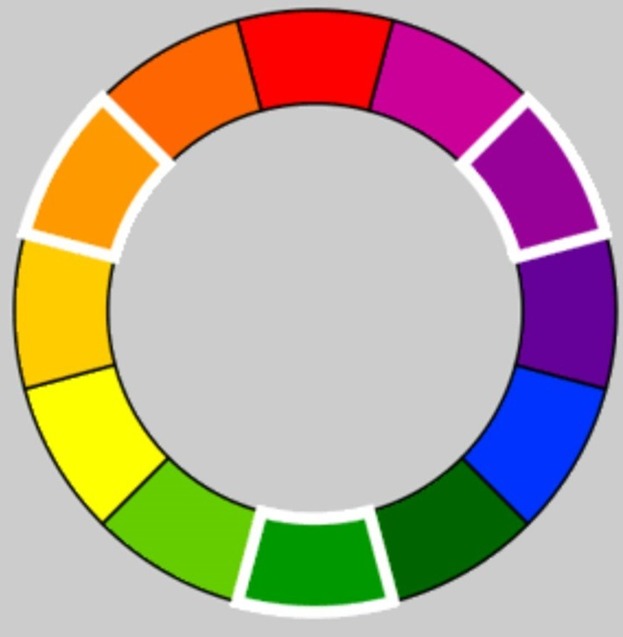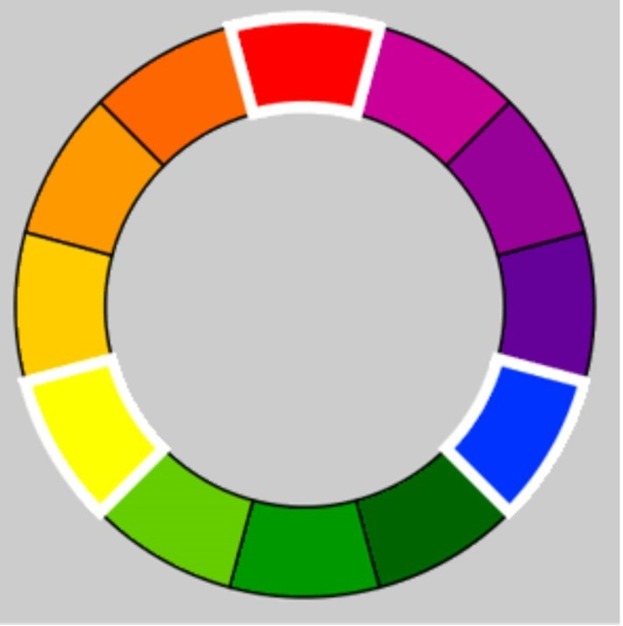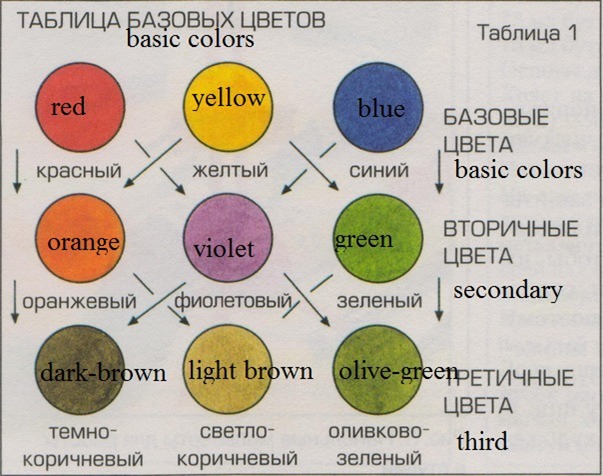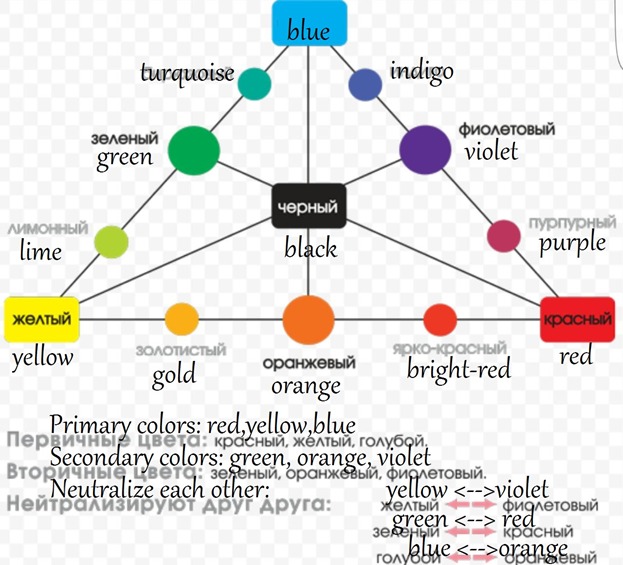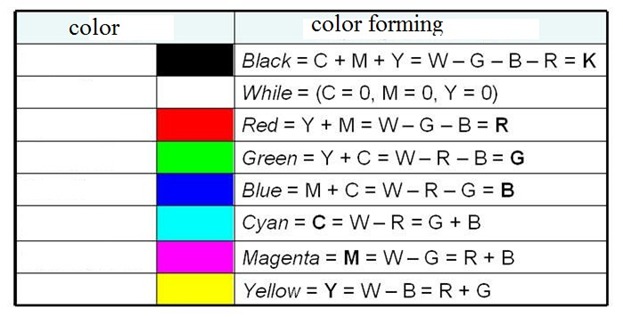Lesson 2 – Pigments in Permanent make-up.
- And let’s continue to speak about pigments in permanent make-up.
- Types of pigments and their composition.
-What the stability of pigments depends?
-What is the basic formula in the pigments manufacture for eyebrows?
-What laws of pigment mixes exist?
-What is important to know about pigments?
All of it you learn from this lesson.
Pigments consist:
- dry component (powder of basic colors forming the right pigment shade)
- liquid component (distilled water, glycerin, alcohol)
The pigments can be differentiated on the alcohol-glycerin and water-alcohol.
Mainly pigments contain glycerin; it gives softness and good texture during operation. Also, glycerin pigments thicken, but not dry, that is very comfortable for master.
On the origin of all pigments are divided into two main groups:
1. Inorganic pigments -mineral composition of the natural or synthetic pigment.
2. Organic pigments (vegetable and animal origin) and organic synthetic pigments.
- 1. INORGANIC PIGMENTS
DO NOT DISSOLVE in water and organic solvents.
Their stability depends on the chemical formula.
As we know, there are stable pigments, which remain in the skin for a very long time and not stable, which leaves the dermis.
In descending order of stability consider inorganic pigments.
1. Titanium dioxide
The chemical formula of TiO2
This is the most stable pigment. The color is white. It stays in the skin for many years slightly varying shade in dirtier.
Masters, remember about it using skin tones pigments. This is the time bomb.
Pure titanium dioxide (TiO2) is a colorless crystalline solid. Despite the lack of color, titanium dioxide is an extremely efficient white pigment, in case it cleaned well. TiO2 practically does not absorb the light in the visible spectrum. Light is transmitted, refracted through the crystal or reflected on the surfaces.
TiO2 is stable (the most stable of all known white pigments), non-volatile, and insoluble in acids, alkalis, and solutions under normal conditions. Titanium dioxide is a highly reactionary resistance to various substances, including toxic, contained in the air.
2. Oxides of chromium Cr2O3
It’s green and very stable.
Chromium oxide is a fine powder of green. Chromium oxide possesses high covering power, light, temperature, weather resistance and resistance to aggressive gases. Chromium oxide dissolves in water, it is soluble in acids and alkalis easily oxidized melted oxidizers (nitrates, perchlorates), the air in the presence of alkalis, and hot solutions of some oxidants.
The chromium oxide pigment- is an artificial inorganic pigment. There are several shades of chrome oxide: grey-green, olive, etc.
3. Ferrocyanide
The color is blue. It’s very stable.
It’s a blue dye that contains no known toxins.
4. Red iron oxide Red
Fe2O3
The color is red. It’s stable.
Red iron oxide used in pure form for the pigment’s manufacture for the lips. In case of improperly using an eyebrow zone, red iron oxide can give pink color with time.
When the less resistant dyes are derived from skin?
5. Black ferric oxide Fe2O4
The color is black.
It’s stable.
Black color has a very cool tone and makes it by yourself for eyebrow mixes is dangerous, because you can get a really nasty cold balance and eventually the eyebrows can become purple.
6. Iron oxide yellow FeOH2O
The color is yellow.
It’s not stable.
Yellow color lights the pigments neutralize red shadows and it’s very important in eyebrow composition creating.
The interesting combination has ochre-yellow pigment with black. It gives olive color used in overlapping.
7. Iron oxide Brown
Fe2O3FeO
The color is brown.
It’s not stable.
It uses for eyebrows. It the most unstable of all listed, that is why it’s hard to get beautiful brown shades on the eyebrows.
The pigments are often used iron oxides:
-brick red
- Red -red
- Ochre -yellow
-black
They are not toxic, that is important for creators and masters!
Most often when mixing three colors- black, red and yellow, it turns out our main eyebrow brown color.
In different proportions, these colors are added by the manufacturer in the basis of pigments and get warm or cool shades of brown.
- 2. ORGANIC PIGMENTS
It' s HAVE a vegetable or animal origin.
-not resistant, easily collapsing and not give the desired result for producers.
They are most often used in pigments for lips.
They give greater brightness than mineral inorganic pigments.
Also now organic synthetic pigments are popular. They are resistant and provide excellent opportunities for master.
Bright red is the most interesting from red organic dyes.
This pigment can be added to any mix for the lips. It does not change the basic shades of pigment but gives brightness and juiciness shade.
From all the black organic pigments the most important to us is carbon black.
The normal pigment molecule is in size of about 6 microns. A molecule of carbon black- is 0.1 micron.
Pigments based on carbon black are much micronized and it’s necessary to apply gently on the eyelids when dry, thin skin with the capillary network.
Highlight the famous black carbon pigments:
- biotek strong black
- CLV black coal
- Aqua-midnight black
- Intense suluape black
Young masters, who are not confident in their abilities and knowledge is better not to use these pigments.
What pigments to choose for work?
The question is ambiguous.
Masters testing a definite brand of pigments a few years, look for the healing results, consult with colleagues in creating those or other mixes and still looking for the perfect combination! So the way the world works. We are always looking for something new, for inspiration, for a sip of fresh air, but often return to proven past.
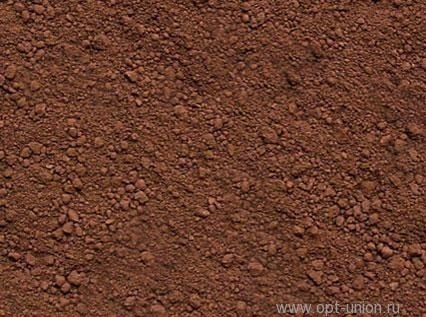

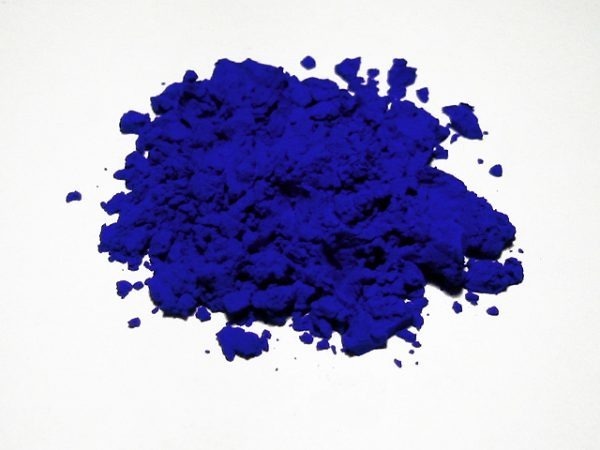
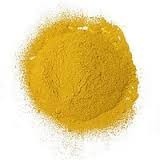
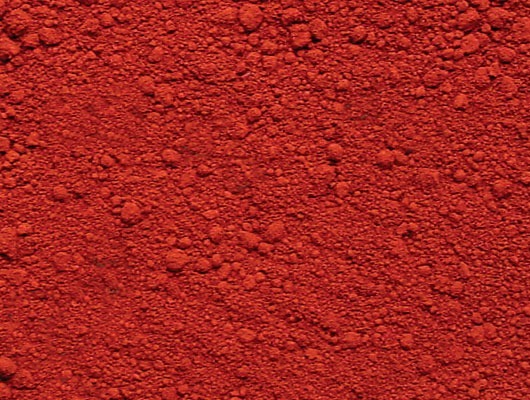
Permanent make-up pigments:
Today, the permanent makeup pigments must require a wide range of demands. New criteria of medical indications and tightening security assessment approaches all cosmetic products have touched and aesthetic cosmetology.
Firstly, permanent makeup pigments should be hypoallergenic, i.e. neutral for the possible reactions of rejection of the body. It’s possible thanks to the wide use of natural components of vegetable and mineral origin.
Secondly, permanent makeup pigments must be sustainable. It's a shame to imagine the situation when purchased with hard beauty comes to naught in a short time. And, perhaps, another requirement for permanent makeup pigments – is big shades’ palette. One of the major phenomena today is that permanent makeup pigments look unnatural, which immediately catches the eye. This is not so. Qualitative modern pigments for permanent make-up are rather discreet pastel shades, close to natural colors. Distinguish the result of applying such pigments for permanent make-up "the naked eye" is virtually impossible.
Guaranteed quality and safe pigments are considered certified pigments. They passed a number of tests and usually cause no doubt.
The permanent make-up devices.
A professional device for permanent makeup is the main job instrument for the master. Old times are gone, when craftsmen tried to make devices for permanent make-up from the old shaver. Today the unit for permanent makeup is a triumph of innovative technologies and advanced design.
Professional systems for permanent make-up is distinguished by perfect ergonomics-usability, is not just a fad, but a necessity. The hand of the master should not suffer the slightest discomfort, to guarantee a perfect result. A professional system for permanent make-up is a true work of art. That is not surprising, because they serve and present art.
Permanent make-up.
What criteria should have permanent makeup? First, good quality pigment for permanent makeup can be considered as one composed of organic (plant) and inorganic (mineral) colored pigments. Vegetable pigments to produce a huge variety of natural shades. This property pigment for permanent makeup is successfully used for drawing on the face. The percentage of organic pigments in pigment for permanent makeup is much higher than non-organic. Although vegetable ingredients for permanent makeup ink faster collapse that occurs due to their "washout".
Such leaching occurs both naturally (through the circulatory system, for example), and as a result of treatments (massage, peeling), stimulating blood flow. Inorganic pigments dye for permanent makeup is less destroyed and remain in the place of the initial introduction. However, under the influence of UV light mineral pigment starts to fade, and within five years (sometimes within two years) permanent makeup comes to naught. The number of available shades of pigment for permanent makeup largely determines the final result: the bigger the palette of shades, the greater the opportunity.
Since many clients argue with the beautician about shades chose, here are some rules for choosing pigment for tattooing and determine what color type of person.
Cool skin type is:
- bluish light, without a flush;
- pink with reddish cheeks takes suntan shade nice;
- skin type is mixed or oil.
Warm skin type if it has the following hue:
- ivory, with freckles, golden beige;
- peach with pink cheeks tans poorly or burns;
- Skin is sensitive, normal or dry.
Some pigments and their application methods:
Permanent makeup should be natural that is why we use tattoo pigments of various companies, such as Permanent Solution, Biotouch, face and body Professionals, etc.
Permanent lip makeup:
Take a look at some of them. For example, the following are suitable for the lips:
- the intense red color and it’s necessary to add orange pigment to retain its juiciness on dark lips.
- soft pink use to increase lips volume, to make it brighter we can add a little bit of white pigment.
- berry tint (cherry) use for girls with dark lips. And that it does not give the blue tone, you need to add a bit of o¬range pigment;
- Gently -red color, to highlight the path add dark red;
- the dark, brownish pigment used for tattooing lips, and mix it with orange pigment to avoid blue tone;
- Purple color, getting on the skin, sometimes darkens, and to prevent this from happening, it is mixed with orange;
Pink is suitable for permanent makeup light skin. For its color intensity mixed with pinkish-purple pigment;
To lighten all pigments, intended for your lips, apply the white color. But it is not recommended to use for camouflage;
For brown hair girls with red eyebrows apply brown tones. If skin color has yellow tide, then this pigment will give her a beautiful shade of tan.
Set of inks for permanent make-up:
Let's look at how to apply tattoo inks other shades:
- Black is designed for eyebrows drawing, but only if a person has naturally dark eyebrows and there is a need to fill the gaps after hairless or scar appearing. In this case a little bit of orange or red is added;
- To light the eastern skin type, you must apply the light brown tone, and to remove blue-green glow use drop of orange or red. This is very suitable for brunettes;
For a beautiful visual effect and to give the skin dark or olive tone, apply dark brown tones. And if they are mixed with light brown or orange pigment, you can give a make-up softness and naturalness;
For blondes with blue eyes and freckles are often used light brown tattoo pigments. To light them, need to add a drop of yellow;
If the blonde is with light skin, dark grey is just for her. It is used to lighten dark eyebrows, but in order to get a lighter tone, mixed with yellow;
If you want to lighten up dark tones, then use yellow shades;
If you mix pure blue with black, then you can apply it for drawing the eye contour. And if you want to create a blue tone, mix it with green or grey;
Women with grey hair usually use gray shades for eyebrows;
If you want to prevent blue tone, then black pigment adds a little red or orange;
-If the pigment for permanent makeup olive, then it neutralizes the pink, orange, purple. And to prevent the transition to purple, orange or pink, add a bit of brown.
Basically tattoo pigments are made of natural components, and therefore it does not irritate the skin and it can be applied to all without exception.
Pigments overview for microblading:
Microblading is a procedure that helps to make the eyebrows color more intense and deep. This manipulation is manual, but the technique is so laborious and delicate that it’s not possible to make it by own efforts. Experience is very important for microblading process. In addition, to obtain the desired shade using special pigments. They exist in a wide range, so to avoid confusion, it is necessary to consider only the most popular.
Softap
Pigments of this American brand are very popular around the world. The reason for this success is the big set of positive qualities of these products. These include flawless quality characteristics; a deep and stable color; in the composition of the present safe ingredients which over time do not change their tint to skin layers; the wide palette of amazing hues.
Goochie
Using these pigments you can not worry about security.
The products of this brand are hypoallergenic, durable and simple to use. Its composition does not contain AZO dyes. In their manufacture are using water, gel, and cream. Before selling, these products undergo a series of tests for compatibility with the skin. Thanks to this permanent makeup pigments Goochie – is excellent quality and durability results. In addition, the palette of the specified products is so high that look for a suitable shade can even the choosiest Lady. If you can’t find an appropriate tone, then the master would resort to such tricks as mixing colors.
Pigments PCD :
The masters of micro-pigmentation often choose such a brand as PCD. The reason for such popularity is that the pigments differ in their safety, allergenic and easy application. The pigment has a gel-like consistency, as well as the dense texture. When you use this product the client will get rich and expressive color. In addition, the pigment does not dry out over time and doesn’t expose to the negative effects of external and internal factors.
Thanks to an improved formula, used in this product, all pigment particles are easily embedded in the skin, and color results retain for 2 years. In pigments developing used unique methodology, thanks to what products are absolutely not toxic, and the criterion of PH is within the physiological norm. In the palette are present basic classic shades that allow you to select the color for standard situations.
Master, making the first steps in the permanent makeup may try to select the pigments independently, basing only on the theoretical knowledge acquired in the courses. But in this case, he must take into consideration the laws of color and modern trends in makeup have a well-developed aesthetic taste. Making your choice, you need to pay attention to the color of the bottle, which is a dye, and the surface color, which is a container with a pigment-they affect color and distorts it.
That is why it is necessary to consider the pigment, not through the bottle. You can put it on a hand. Not worth to buy a pigment basing on a paper palette. As a rule, it is a white sheet with a sample of pigment. The white color itself distorts the shade, so the true color of the pigment does not match what you see on paper. The color effect and concentration: for example, a thick drop of pigment and the pigment that fathered on the skin or a piece of paper will look totally different.
The tone of the pigment doesn’t depend on the basics (gel or water-alcohol), but this fact should be taken into account choosing its technology. The first is denser, second is transparent. It’s necessary to spend more time on water-based pigments to achieve a certain density. And while such pigments are cheaper, they dry up during a procedure, and you have to take a new portion of the bottle, so it consumes rapidly, and the economy turns out quite illusory.
And subtle "pigment" feeling comes only with experience. These subtleties can be attributed to the behavior of the dye in the skin, understanding the factors that influence this behavior (such as density, depth, and area of introduction). Color dye that can be seen through the bottle, of course, is important, but an experienced specialist knows that it does not match the result of the work with the introduction of it under the skin. And novice masters genuinely do not understand why a gentle natural shade became purple or lilac-gray beneath the skin.
The pigment tone depends on skin depth injection. It is widely believed that for lip permanent makeup should be chosen warm color pigments because they getting into the skin, they begin to "go away" in a colder range. It's true. However, if you enter the maximum pigment superficially, in the upper layers of the dermis and minimal concentration, the cool shades look natural, perfectly combined with the natural, cold red shade border of the lips.
Microblading pigments differ from tattoo products by texture- they are denser, viscous and concentrated. Otherwise, the dye would spread under the skin, and instead of clear lines, formed the "blobs". As a basis used glycerin with adding of mineral inorganic pigments: iron oxide is black color, chromium oxide is green, titanium dioxide is white, ultramarine I blue, manganese-is burgundy-purple, ferrocyanide- is purple-black. Combinations of these pigments provide the final shade.
Medications should be subacidic or neutral. If there is acid or alkaline, at the place of injection may occur irritation (swelling, redness, itching). In addition, it is very good to compose of substances that promote rapid healing of the skin. In addition to mineral inorganic compounds, pigments for microblading may add biological dyes. They are cheaper but can cause allergies, as well as give an unpredictable color effect.
In this lesson, we will learn some nuances of mixing pigments.
Mixes for eyebrows, lips, and eyelids: so, as we all know we have three primary colors.
Blue
Red
Yellow
These are the colors that you can't get by mixing all other colors and shades.
Mixing these three colors in certain proportions we get the neutral brown color to the eyebrows.
In order to saturate and get a darker color-we to take bluer (meaning any brown color on a cold base).
If we want to get a light shade- we add more yellow, medium red and slightly blue colors.
So you can get a million different combinations. And if to take into consideration that client skin contains all these colors in different proportions, you can get more various combinations.
Mixing the primary colors, we get secondary ones; you can see them on the diagram on the sides of the triangle, as well as on the circle under the point of a triangle with the secondary colors.
Red + yellow = orange
Red + blue = purple
Blue + yellow = green
On the circle around the triangles between the primary and secondary colors are tertiary, which we get by mixing primary and secondary colors (always in equal proportions!). This includes the following colors:
Red + violet = purple
Blue + violet = blue-violet
Blue + Green = cyan
Yellow + green = yellow-green
Yellow + orange = yellow-orange
Red + orange = red-orange
Here's another circle to remember:
And here is the primary color on the wheel (marked white squares):
Secondary colors on the wheel:
Tertiary color on the wheel:
Why do I come back to Itten’s circle?
You must understand that all the eyebrow pigments are mixed according to the principle of getting brown-red, yellow and blue.
That is why I consider all the pigments from this perspective.
If you know the basics of the pigment, you can understand what concealer or color to take into the mix, not to receive unwanted tint. And don't forget about the skin. It also contains varying concentrations of pigment. All this is necessary to calculate the logical path and use the pigment in work after the analysis of all these aspects and not on the basis of intuition.
I know that usually, students don’t get enough information about pigments, master’s work intuitively making mistakes, disappointing in teachers and profession.
Here it’s interesting information:
Printers are used the system color picker CMY for picture printing. The primary colors are Cyan -blue, Magenta -purple and yellow -yellow. The colors in the palette CMY are formed by basic overprinting colors. Color palette Color can be determined using the formula: Color = c + M + Y intensity of each pigment is measured in the following percentage: 0% ≤ s ≤ 100% 0% 100% ≤ m ≤, 0% ≤ Y ≤ 100%
Mixing pigment system in pairs CMY, we get the basic color in the system color RGB:
This also applies to the overlapping; we always take a shade, standing opposite the unwanted colors in terms of Itten.
To check the pigment basis and color changing with time on your skin, you need to put a drop on a damp towel and have a look at what was left on the periphery of the drops-both pigments. The pigment is warm if we see orange or yellow color.
The pigment is cold if we see gray, purple or blue color.
